On the advice of school physician, Obadiah G. Given, Richard Henry Pratt recommends the immediate return to their homes of Esther and Louisa Metoxen.
National Archives and Records Administration
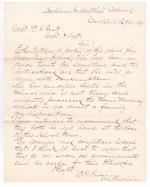
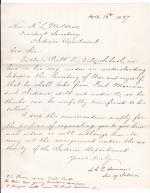
Secretary of the Interior Lucius Q. C. Lamar orders the Assistant Secretary of the Interior H. L. Muldrew to provide Richard Henry Pratt with orders authorizing him to transfer members of the Apache Nation being held prisoner at Fort Marion in St. Augustine, Florida to the Carlisle Indian School.
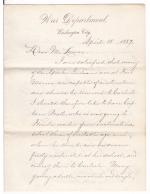
Secretary of War, William Crowninshield Endicott, informs the Secretary of Interior Lucius Q. C. Lamar that he believes that many of those at Fort Marion can be sent to Carlisle. Endicott ends by noting that he will leave it up to Richard Henry Pratt to select individuals to take with him to the Carlisle Indian School.
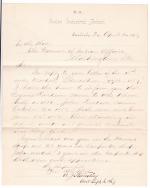
Alfred John Standing responds to an Office of Indian Affairs letter providing information on former students Cyrus Dickson and John Dickson (also known at the school as John Dixon). He indicates that Cyrus spent one year in the harness shop and two and half years in the carpenter shop with John spending three years in the carpenter shop.
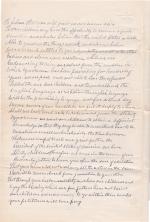
A group of members from the St. Regis band request from President Grover Cleveland to allow their children to be enrolled at the Lincoln Institute and the Carlisle Indian School. They cite that those schools will allow their children to better learn to speak English as well as a trade.
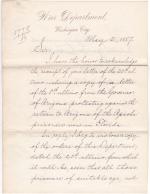
Secretary of War, William Crowninshield Endicott, responds to a letter from the Secretary of the Interior regarding a protest lodged by the Arizona Governor about returning the prisoners of war held at Fort Marion. Endicott notes that those not transferred to the Carlisle Indian School are to be transferred to the Fort Pickens and Mount Vernon…

Monthly report of Lieutenant Loomis L. Langdon on the prisoners under his charge at Fort Pickens and Fort Barrancas. Langdon writes that the health of the prisoners is good and they are involved in various work projects including digging wells as well as scraping, painting, and piling shot and shell inside Fort Pickens.
Langdon further…

Loomis L. Langdon, Commander of Fort Pickens and Fort Barrancas, provides his monthly report of the Indian prisoners under his charge. In his report, he repeats a request to have Go-so enrolled at Carlisle.

These materials include a cover letter and Descriptive Statement of Pupils regarding the discharge of sisters Esther and Louisa Metoxen from the Carlisle Indian School and their transfer to their home in the Green Bay Agency of Wisconsin.
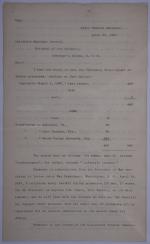
Final report of the prisoners held at Fort Marion including an account of births, deaths, and transfers to the Carlisle Indian School, Fort Pickens, and Mount Vernon Barracks.
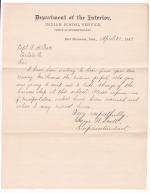
Richard Henry Pratt forwards a letter from George W. Scott, the Superintendent of the Fort Stevenson School, regarding sending Carlisle student George Thomas to take over their harness shop. Pratt notes that he has had no reply from the Office of Indian Affairs regarding his request.
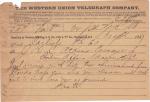
Richard Henry Pratt informs the John D. C. Atkins, the Commissioner of Indian Affairs, that he has arrived back at Carlisle with 62 members of the Chiricahua band from Fort Marion. He ends by noting that he hopes the Atkins will now visit the school.
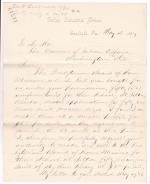
Richard Henry Pratt requests authority to produce and sell fifty uniforms for students at the school run by the Presbyterian Board of Home Missions in Sitka, Alaska.
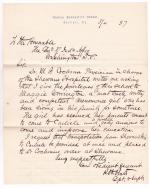
Richard Henry Pratt informs the Commissioner of Indian Affairs that M. B. Cochran has requested Maggie Worrington be enrolled at the Carlisle Indian School. Pratt requests that transportation for Worrington be placed with Cochran to allow Worrington to travel to Carlisle.
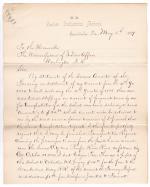
Richard Henry Pratt responds to a statement from the Second Auditor of the Treasury in settlement of his accounts from the fourth quarter of 1884 to and including the fourth quarter of 1885. Pratt goes through a list of transportation costs that were disallowed due to a portion of the road being subsidized by bond.
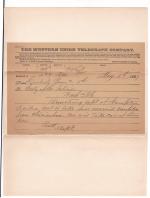
Richard Henry Pratt informs the Secretary of the Interior that Samuel C. Armstrong, Superintendent of the Hampton Institute, has declined to enroll four married Chiricahua students from Fort Marion. Pratt writes that the students will be taken care of at Carlisle.
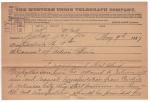
Request from Richard Henry Pratt to permit Louis Bayhylle to return home with his father, Baptiste Bayhylle, with travel provided to Arkansas City via the Pennsylvania Railroad.
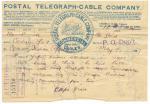
Request from Richard Henry Pratt to return Frank Yates to Arkansas City with Chief Bayhylle due to Yates' poor health.

These materials include a cover letter and a Descriptive Statement of Pupils regarding two individuals discharged from the Carlisle Indian School and transferred back to the Pawnee Agency.
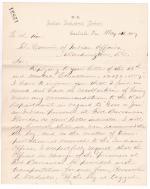
Request for transportation to placed with the Officer in Charge of Fort Barrancas for Go-So or Jose from Pensacola, Florida to Carlisle, Pennsylvania.
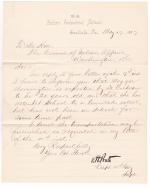
Richard Henry Pratt requests that transportation be arranged for Maggie Worrington to enroll at Carlisle.
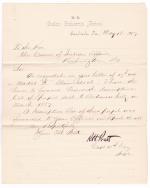
Richard Henry Pratt provides an explanatory letter for the descriptive list of pupils forwarded to sent to Arkansas City in March 1887.
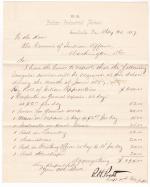
Captain Richard H. Pratt provides the Commissioner of Indian Affairs with a list of irregular labor required for June 1887. Pratt also includes details on compensation, position title, and the number of workdays required for the month.
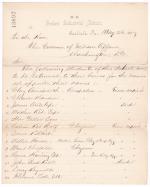
Richard Henry Pratt provides the Office of Indian Affairs with a list of 80 students to return to their homes due to expiration of their terms and sickness. Pratt also details the travel arrangements for travel to the various agencies and locations. He also notes that 68 pupils whose terms have expired have elected to remain at the school.
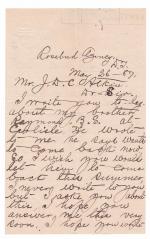
Grey Eagle Tail writes to the Office of Indian Affairs requesting the return of his brother Raymond B. Stewart from the Carlisle Indian School. Grey Eagle Tail informs the Office Stewart wants to come home and Grey Eagle Tail wants him home as well.
